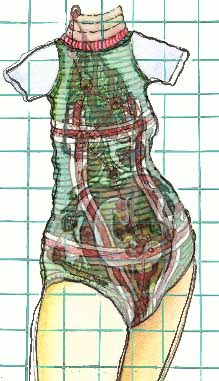What’s the problem?
Feminist situated point of view theory reminds us that information and knowledge are socially situated and that the perspectives of minority groups are systematically excluded from so-called “general” knowledge.
Video games are widely spread and neglected narrative spaces for different reasons, among them
- Recent and rapid development associated with closed nerd environments
- The creation of economic niches in environments controlled by the nerds themselves.
- The development of a specific culture and language
They produce visual worlds that are intimately associated with a power in place.
It will be necessary to recognize the existence of this power to include and exclude, to learn to detect it and to develop a visual language to describe it. In the immediate term, it is important to recognize that data visualization is one of the most powerful and biased power tools.
The computer is obviously a medium based on text, but its use is material and engages our bodies in front of the machine and more and more our bodies integrated into the machine.
Feminist Issues in the Computer Environment:
We often forget that the awareness of this problem is not recent, the stakes of the widespread adoption of the computer tool, and considered sufficiently promising to be the subject of one of the biggest advertising campaigns of the 1980s, that of the launch of the Ą̷̪̋́͜p̸͇̲͎͊p̷͔̅̂l̸͔̗͑ę̵̟͎́̇ Macintosh in 1984, presented at the Superbowl.
Women’s movements of the 90s:
Cyberfeminism has long been addressing the challenges of body digitization and continues to address the issue in a web 2.0 context. The body as an area of increased control:
- Gestual Control
- Ongoing collection of health information.
- Reproductive control
Smart Mom, a project of Subrosa, Faith Wilding
The current development of feminist networks refers to the development and history of women’s collectives that have transformed discourses around the body addressing both the
visual representation itself and power structures.
Women’s structures therefore have a long experience of solidarity groups and specific modalities for sharing support and networks forms around the health of knowledge sharing and mutual support. This has made it possible to gradually introduce a transformation of the place of women in the fields of power, the so-called male professions, and gradually the fields of information technology, but this transformation has taken place within the framework of a white feminism that does not question the racial structure of the capitalist system, and the intersectional oppressions it generates on minority populations and on nature, quite the contrary, white feminism has reinforced these oppressions and relied on them. White feminism has not challenged the patriarchal system and capitalism itself, it has only defended the interests of some women by relying on the system in place. However, it can be credited with having made it possible to update certain power structures on which we will rely, and to create solidarity networks on which they have been able to rely to develop a reflection on the challenges of controlling bodies.
Some intersectional issues:
While capitalist society has allowed white women access to professional recognition and then to civil rights since the post-war period, in the present day many non-white populations have no access to either and represent a significant part of the Western labour force, the one that allows others to exist.
It is only one side of the problem that is the most obvious and visible, but the general observation is that opressions accumulate and intersect, while some are not considered or even increased by a form of racism.
Some women have sought to respond to this reality, and several intersectional feminist discourses have arisen, some have sought to describe technological systems, including the racism induced by algorithmic systems, but for the purposes of our work, I would like to focus on the differences that these women bring in terms of their approach to issues of collaboration and historical relationship, which draws on the knowledge developed over centuries of resistance by people, particularly black people, and which calls for peaceful connection and collaboration, along with the principles of sisterhood.
In video cames how are can we issues approch these issues
A few rare examples where racial issues are treated in video games:



